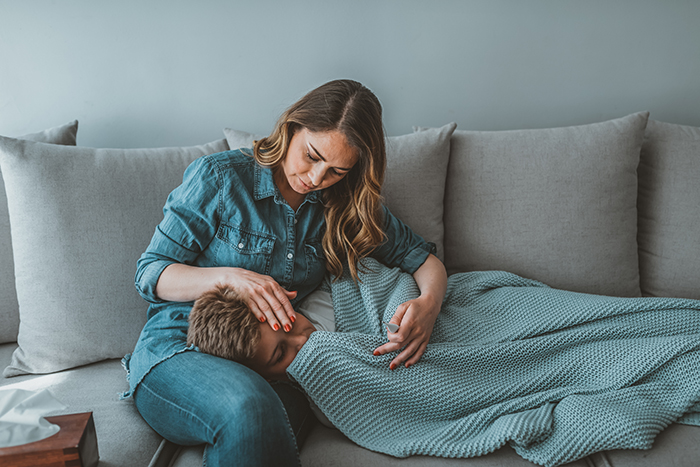When Children Get Migraines

You may be surprised to learn that children as young as two years old can suffer from migraine headaches.
While it can be alarming for parents of young children complaining of head pain, the vast majority of pediatric headaches are benign. Most children and adolescents with migraines have close family members who also have migraines because this condition tends to run in families. But pediatricians noticed an uptick in reported migraines during the height of the COVID-19 pandemic.
“At the very beginning of the pandemic, fewer children and adolescents were complaining of headache,” says Paige Kalika, D.O., a pediatric neurologist with the University of Miami Health System.
“This is possible because the kids were sleeping more and were less stressed out because they weren’t in traditional school. However, once school started again, I saw a definite increase and worsening in pediatric migraine complaints.”
What causes migraines in kids?
- hereditary predisposition or genetics
- increased stress/anxiety
- poor sleep, diet, and exercise habits
- too much screen time
“In general, migraines tend to be triggered by stress,” Dr. Kalika says. This includes physical stress (poor quality and insufficient sleep, unhealthy diet, and dehydration) and emotional/mental stress caused by social, academic, and family challenges.
“Some people also have specific triggers that set off migraines, like certain foods (cheese, tomatoes, or caffeine), smells (perfume or cigarette smoke), or changes in weather. Triggers can be unique to each person.
I have one patient whose headaches are triggered by the smell of peanut butter.
Dr. Paige Kalike
How can you tell if your child has a migraine?
Children who can express themselves verbally will usually tell you if their head hurts. “If a child complains of a headache but continues to act and play normally, the headache is probably not very severe,” Dr. Kalika says.
“When your child wants to stop playing to rest, that’s a sign that the headache is more severe, although not necessarily dangerous. If the child wants to lie down in a dark, quiet room, that’s a pretty good sign that it’s a migraine.”
Children who cannot communicate verbally may tilt, point to, or even hit their heads to demonstrate their distress. They may hide, lie down, or be irritable. With migraines, some young children will also experience dizziness, stomach pain, nausea, and/or vomiting.
How to help a child with a bad headache
Most pediatric headaches are benign and will go away on their own with rest and patience.
“But, if your child has frequent headaches, headaches that awaken them from sleep, or that start first thing in the morning, or headaches that change in frequency or nature, please talk to your child’s pediatrician,” says Dr. Kalika.
To safely treat your child’s headache or migraine, you can start with acetaminophen or ibuprofen. “Don’t be afraid to give the appropriate dose (read the bottle or ask your pediatrician for the weight-based dose) because giving your child a little medicine to take the edge off doesn’t work,” she says.
Just avoid administering (or taking) these over-the-counter medications too often (more than two to three times every week).
Overuse can cause the body to get accustomed to the medication and may lead to rebound headaches when not taking it.
“When children and adolescents visit me complaining of frequent headaches or migraines, I generally start with conservative treatment,” Dr. Kalika says. “I discuss improving healthy habits (eat well, sleep well, drink lots of water, and get daily exercise). Certain vitamins and minerals, like magnesium and riboflavin, can be mildly effective in reducing migraines. I also recommend Cognitive Behavior Therapy, meditation and mindfulness apps, and yoga to help manage stress. Practices that help reduce stress will eventually help reduce migraine frequency and intensity.”
The latest in migraine treatments
If your child frequently needs to take over-the-counter pain medication for headaches, it may be time for a daily prescription to prevent migraines. These medications can take time to start working, so it’s essential to be patient.
Injectable Botox is approved for people who have tried and failed multiple other migraine treatments. “Botox has great evidence as a treatment for severe, frequent migraines for adolescents and adults,” Dr. Kalika says. “It’s a good option because, unlike other medications, it lasts for three months and the side effects are usually mild.”
There are many new treatment options in development and being approved. If frequent migraines are a pain in your household, talk to your doctor.
Dana Kantrowitz is a contributing writer for UMiami Health News.
Tags: Dr. Paige Kalika, headache, headaches in kids, kids, migraine triggers, migraines
